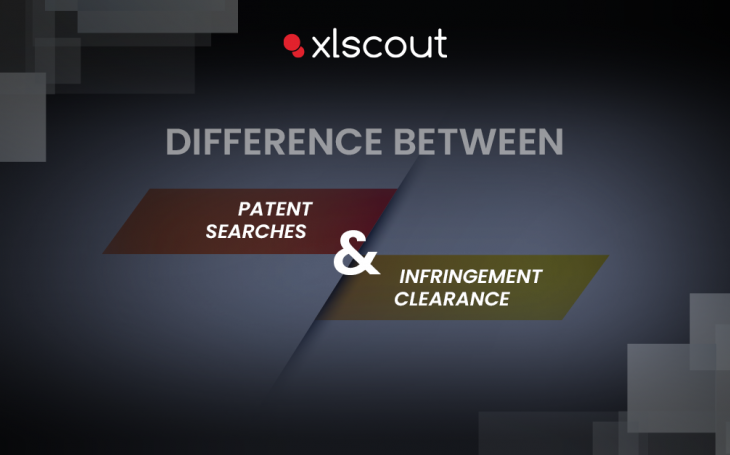
Businesses must be extra cautious when it comes to protecting their inventions and products from potential legal challenges especially IP. Patent searches and infringement clearance are two critical processes that help businesses avoid legal wranglings and protect their intellectual property. Unfortunately, many businesses are unfamiliar with the distinction, which can lead to confusion and potential legal issues.
In this blog post, we will talk about the key differences between patent searches and infringement clearance. As well as why both are necessary for businesses to navigate the world of intellectual property.
To begin, patent searches are performed to determine whether an invention or product has already been patented or whether there are any similar patents that may impact the ability to obtain a patent. In contrast, infringement clearance is performed after obtaining a patent and is used to make sure that the product or invention does not infringe on existing patents held by third parties. Understanding the difference between these two processes is critical for businesses that want to effectively protect their intellectual property and avoid costly legal battles.
What is Patent Search?
The process of searching through existing patents to determine an invention’s novelty and non-obviousness is referred to as “patent search.” A patent search seeks to identify “prior art,” which is any publicly available information relating to the invention under consideration.
A patent search can help inventors and businesses determine the likelihood of obtaining a patent for their invention as well as identify potential infringements of existing patents. Online patent databases, patent search engines, and physical patent libraries can all be used to conduct patent searches.
Patent searches are an important step in the patent application process that can be performed by individuals, companies, or patent attorneys. Inventors can save time and money by conducting a thorough patent search before pursuing an invention that may not be patentable or infringe on an existing patent.
What is Infringement Clearance?
The process of carrying out an in-depth review of a product, service, or idea to ensure that it does not infringe on any existing intellectual property rights is known as “infringement clearance.” This usually entails researching and analyzing existing patents, copyrights, and trademarks to see if the proposed product, service, or idea is likely to infringe on any of these legal protections.
The purpose of infringement clearance is to identify and address potential legal risks before releasing a product, service, or idea to the public. If issues of infringement are discovered during this process, the intellectual property owner may take legal action to prevent the product, service, or idea from being sold or used without permission. Companies can reduce the risk of legal disputes. Moreover, they can make sure that their ideas are fully protected from court challenges by conducting infringement clearance.
Difference Between Patent Searches and Infringement Clearance
Patent searches and infringement clearance are both important intellectual property processes, but they serve different purposes and use different methods.
Patent searches entail searching existing patents and patent applications to determine whether an invention is novel and non-obvious. This procedure is usually carried out prior to filing a patent application. And it assists inventors and businesses in determining whether their invention is likely to be granted a patent.
In contrast, infringement clearance entails conducting a search for existing patents, trademarks, and copyrights. Its purpose is to determine whether a proposed product, service, or idea violates any of these legal safeguards. This process is typically carried out prior to bringing a product, service, or idea to market. It also helps businesses avoid disputes and ensure that their products, services, or ideas are fully protected from legal challenges.
While both processes involve searching for existing intellectual property, patent searches are concerned with determining an invention’s patentability. Whereas infringement clearance is concerned with avoiding infringement of existing intellectual property rights. Furthermore, patent searches are typically more technical and involve a more detailed examination of the invention itself. Whereas infringement clearance is more focused on legal analysis of existing intellectual property rights.
Summing Up
In summary, patent searches and infringement clearance are two distinct intellectual property processes. Before filing a patent application, patent searches are performed to determine the novelty and non-obviousness of an invention. In contrast, infringement clearance ensures that a proposed product, service, or idea does not infringe on existing intellectual property rights. Patent searches are more concerned with the technical aspects of the invention. Whereas infringement clearance is more concerned with the legal aspects of existing intellectual property rights. Both processes are important for intellectual property protection, but they serve different purposes and use different methods.

